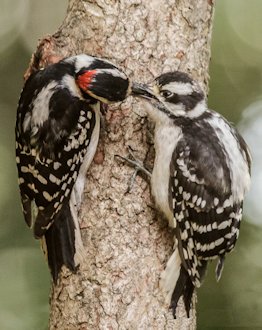
|
Bird Niches in its Habitat A niche is the role of a particular species -- what it does -- within its habitat. No two species perform precisely the same role in a particular habitat, at least not for long. If they do, competition for food and a place to live results, and one species eventually excludes the other. The competing species may also "compromise" by developing different niches. A great deal of ecological study is directed toward defining the niche of a species. Without that knowledge we cannot examine how human activities affect a given species or manage the conservation of species. Competition is a powerful force that molds species' niches and sex and age-specific niches within a species. For example, if males and females had to compete for limited food, pair-bonds might be weakened and nesting success diminished. Where resources are limited, the sexes of some species use the resource differently. For example, if you watch a Downy Woodpecker from a distance for 15 to 20 minutes, you can almost certainly guess the sex of the individual by its behavior. Male characteristically forage on small trees or on small branches of large trees; females typically forage on the trunks and larger limbs of large trees. The niches overlap, but the slight distinction limits competition between the sexes. |
| Downy Woodpecker | |
| Return to Avian Ecology Choices | |